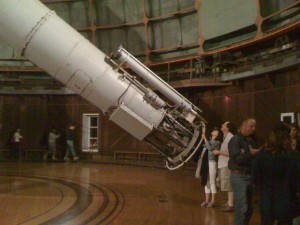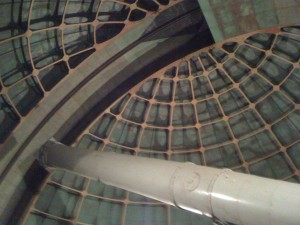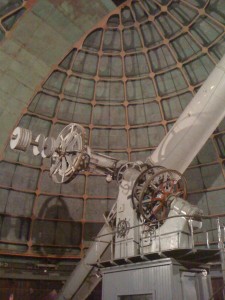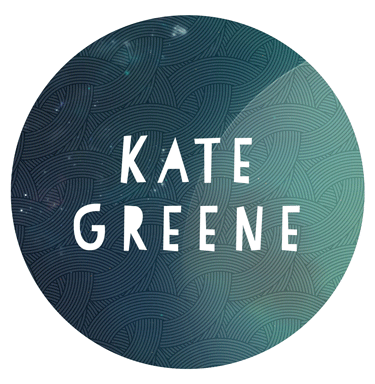I had the opportunity to visit Lick Observatory a few weekends ago. Jill and I took the windy road up Mt. Hamilton, just east of San Jose to attend an event called Music of the Spheres, which included a music concert, an astronomy lecture, and some telescope-peeping.
For the most part the event was awesome. I must admit that the music of Tingstad and Rumbell (who I keep referring to as Tungsten and Ribald) was somewhat dull to my unaccustomed ear, but the lecture more than made up for it. Deborah Fischer of SFSU was supposed to talk about the search for exoplanets, but her flight was delayed and she couldn’t make it. Instead, a Lick Observatory regular gave a delightful and entertaining talk about the history of the facility. I was ready to be bored, but the story of the wealthy, eccentric James Lick and all the cool research at the observatory, like adaptive optics that take the twinkle out of stars, was really amazing.
The main attraction at the event should have been the massive 36-inch refractive telescope, built in 1888 and still the second largest in the world. They just don’t make them like this anymore because it’s far too expensive and nearly physically impossible to build lenses much larger. And more importantly, it’s unnecessary to make a refractive telescope this large because most optical telescopes are reflective, and use curved mirrors to focus light instead of lenses. Unfortunately for us, though, the night was cloudy and there was moisture in the air, which meant that the dome that encloses the telescope couldn’t be opened because water degrades the lens. Still, anyone who wanted it was able to snag some star-gazing time. Amateurs who built their own scopes set up in the parking lot and pointed toward globular clusters, nebulae, and a nearly full moon as the clouds permitted.




One Response to One Big Telescope